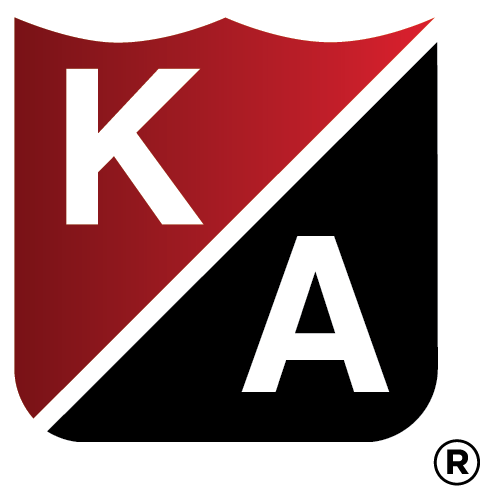What is Your Change Mandate?
In Part One of this series on Strategic Planning for the Next Normal, we focused on what a V.U.C.A. world it was in 2020, and again in 2021. V.U.C.A. is an acronym for Volatile, Uncertain, Complex, and Ambiguous. We suggested in Part I that it is time now (Spring, 2021) for you to stand up, dust off, and take inventory of just how your business (and your customers’ businesses) has changed. We said in Part I you can now write a Change Mandate statement. If you have not done that already, go back to that Part I article and then talk over your written Change Mandate as a leadership team in your company. In Part II, we will show you how to convert your written Change Mandate into your New Vision.
Your Change Vision
When any organization is faced with rapid change (e.g., V.U.C.A. circumstances), leaders face a choice:
- Choice A. Stay nimble, stay reactive, and focus on the trend-of-the-day. In other words, do not have a vision for the organization, just keep reacting to the circumstances that have been dealt to you each week. This is a conscious choice to not invest in a plan, and instead, be especially nimble and changing every day, week, and month. It’s simple: react. The downsides are many: 1 – leaders start only reacting to the topic of the day; 2 – With no long-term vision, you can also expect an unclear Capital Expenditure plan for your organization; 3 – Initiatives that usually take years to pay off never make the light of day; 4 – Your customers, business partners, and other stakeholders get confused about who your organization is and what it stands for. It is efficient in the very short term to just react (e.g., to be agile). But, often the most efficient thing to do is not the right thing to do. Often, the right thing to do is . . . well, Choice B.
- Choice B. Establish your Change Vision. This is also a conscious choice to have a particular vision in your top leadership team’s collective mind and to allocate resources toward achieving it. That vision needs to be very detailed to be effective. The downsides here? Mainly, the downside is that you might be wrong. Your vision for the future of your organization may be built on weak market research or just one person’s opinion. A good format to use to prevent that outcome is the famous Jim Collins Core Ideology approach, which includes:
- A Big, Hairy, and Audacious Goal (“B.H.A.G.”) for your company many years into the future (> 15). Some may say that such very long-term visioning is hard to do when times are changing rapidly. That’s right. It’s hard work. It requires good market research, strong Voice of the Client studies, a lot of internal analysis, and probably multiple offsite retreats for your team to build their shared vision.
- Big means gnarly.
- Hairy means gnarly.
- Audacious means gnarly.
- I have always wondered why Jim Collins did not just term it a G.G. – Gnarly Goal.
- It should be the sort of statement that is NOT your mission, but it is your shared ambition, or aspiration. It should be short, punchy, bold, and make your palms sweat just a bit. It is not a slogan, or a marketing tagline. It is your top leader’s strongest, boldest opinion on where to go with their company. Not how, just where.
- A Vivid Vision Statement for your company that stimulates progress, inspires employees, marshals resources, and is detailed. In our construction company, our B.H.A.G. is only 10 words long. But, our detailed vision? It is six paragraphs of our top leaders’ best thinking on where we are going. These lengthy statements are used extensively as management tools internally to build energy (and activity) around the shared vision. Annual action planning in companies that have a vivid and detailed vision is amazingly easier than among those who perform annual action planning in the absence of a shared vision. Developing a long, well researched statement of your shared vision is an expansive proposition. Your team cannot develop this statement in a spare hour, nor can it be delegated to your Marketing Department. These are typically best developed in a professional, facilitated environment.
- It can be a lengthy statement.
- It should be balanced (i.e., not just a financial vision).
- It should receive huge top leadership support.
- It should become common language internally in your company.
- It should be focused three, or five-years hence.
- Each year, it should be recast, and the next annual action plan developed.
- A Big, Hairy, and Audacious Goal (“B.H.A.G.”) for your company many years into the future (> 15). Some may say that such very long-term visioning is hard to do when times are changing rapidly. That’s right. It’s hard work. It requires good market research, strong Voice of the Client studies, a lot of internal analysis, and probably multiple offsite retreats for your team to build their shared vision.
Vision Without Action Is Dreaming
We think dreaming is a good thing. Whether it’s a vivid dream overnight or a business dream a team shares for their company – dreaming is imaginative and therefore important. We often hear clients talk about the importance of working on their company, not just in their company. Some of this work can be dreaming, using the outline we’ve provided above. Then, when that vivid vision is supported by your top leaders and you are ready to implement new action plans for your company that align to that vivid vision, there is another step. It’s one of the most forgotten steps in strategic business planning: communicating the change vision. If what you want is an organization that is focused on a shared and detailed vision, and working toward that vision every day, then you must spread the word in your organization. Managing strategic change is often about just that: making sure your leaders understand your Change Mandate, your B.H.A.G., and your Vivid Vision of the future. It is commonplace to underestimate how much communication is needed. Most leader underestimate the importance of communicating their new strategic direction – by a factor of 10x.
Next in the Series: In the final of this three-part series on Strategic Planning for the Next Normal, we’ll break down how to communicate the change vision in your organization.



